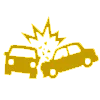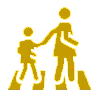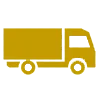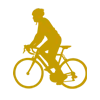Utah Local Accident Resources
Utah Local Accident Resources
Did Someone You Love Die in a Utah Car Accident Today?
We are here to support you every step of the way and to provide the experienced legal representation you need during this challenging time. Reach out today to take the first step towards securing the justice and compensation your family deserves.
Losing a loved one in a car accident is an incredibly difficult and emotionally taxing experience, especially when the tragedy occurs due to someone else’s negligence. We understand the profound impact such a loss can have on your life and are here to provide compassionate support during this challenging time. Our dedicated team is committed to helping you navigate the complexities of your legal options and ensuring your family receives the justice and compensation you deserve.
This page will provide valuable resources, detailed FAQs, and essential accident statistics related to wrongful death cases in Utah. These resources are designed to offer guidance, answer your pressing questions, and provide insight into the steps you can take to seek accountability and compensation. Whether you need information on how to proceed with a wrongful death claim or resources to support you through this challenging period, we are here to assist you every step of the way.
Valuable Resources for Wrongful Death Victims
Many surrounding those involved in a Utah wrongful death may encounter significant challenges related to their finances, accident reports, and mental health following an accident. Financial difficulties often arise from mounting medical bills, lost wages, and other expenses. Accurately documenting the accident through detailed reports is crucial for building a strong case and ensuring that all relevant information is considered in your claim. Additionally, addressing mental health issues such as trauma, anxiety, or depression is essential for your overall well-being and recovery.
Properly managing these aspects can significantly impact your case’s outcome and quality of life. By securing accurate accident documentation and accessing mental health support, you can strengthen your claim and enhance your chances of achieving a favorable resolution.
If a Wrongful Death Lost Your Family Potential Income
After losing someone who may have been a substantial part of your and your family’s financial well-being, having access to economic resources is crucial for managing the immediate and long-term impacts on your life. These resources can provide vital support for covering medical bills, living expenses, and other financial obligations during reduced income.
Additionally, they can offer assistance in navigating complex applications for disability benefits and other forms of aid. Utilizing these resources effectively can help alleviate financial stress, allowing you to focus on recovery and improve your overall well-being during a challenging time.
Here are some financial aid resources for Utah wrongful death victims who have lost income due to the loss of someone:
The United Way of Salt Lake
The United Way offers emergency financial assistance and support services to individuals facing financial hardships due to wrongful death. They can connect you with various local resources and aid programs.
- Phone: (801) 736-8929
- Website: uw.org
Utah 211
Utah 211 is a free, confidential service that connects individuals with community resources, including financial aid, food assistance, and other support services for those without income due to a wrongful death.
- Phone: 211
- Website: utah211.org
These resources can provide critical financial support and help navigate the challenges of being unable to work due to an accident.
If You Are Having Trouble Locating The Official Accident Report
Obtaining a copy of your official accident report is essential for effectively managing the aftermath of a car accident, especially in the case of a wrongful death. This report provides a detailed account of the incident, including critical information such as the location, involved parties, and crash circumstances. It serves as a crucial piece of evidence in legal and insurance proceedings, helping to establish fault and support your compensation claims.
Securing a copy of your accident report not only aids in your legal and insurance processes but also helps protect your rights and supports your efforts to obtain fair compensation for damages, including fatalities. You can locate your official police accident report through the following agencies:
Here’s a list of how to obtain a copy of your Utah car accident report, including contact information and costs:
Utah Department of Public Safety – Driver License Division
You can request a copy of your accident report through the Utah Department of Public Safety, which maintains records of traffic accidents.
- Phone: (801) 965-4437
- Website: dps.utah.gov
- Cost: Typically $15 per report.
Utah Highway Patrol
The Utah Highway Patrol provides accident reports for incidents investigated by their officers. Requests can be made online, by mail, or in person.
- Phone: (801) 965-4445
- Website: highwaypatrol.utah.gov
- Cost: Approximately $15 per report.
Local Police Department
If a local police department investigated the accident, you can request a copy of the report directly from the department that handled the case. Procedures may vary by location. Contact the specific police department where the report was filed. For general inquiries, you can reach out to:
- Salt Lake City Police Department: (801) 799-3000
- Website: slcpd.com
- Cost: Fees may vary, often around $10 to $20 per report.
City or County Clerk’s Office
Some accident reports may be available through the city or county clerk’s office, depending on where the accident occurred. You may need to provide specific details about the incident.
- Salt Lake County Clerk’s Office: (385) 468-7400
- Website: slco.org/clerk
- Cost: Fees generally range from $10 to $15 per report.
Online Services
Online services such as the Utah Traffic Records website allow you to request and download accident reports. Ensure you use a reputable service and verify the cost.
- Website: utah.gov
- Cost: Typically $15 to $20 per report.
Each agency or service may have different procedures, so checking their websites or contacting them directly for the most accurate and up-to-date information is advisable.
At Local Accident Reports, we can help you get a complimentary copy of your police report. Call us today to inquire.
If You Are Experiencing Mental Health Issues After The Accident
Many Utah wrongful death survivors face significant mental health challenges following serious accidents, such as trauma, anxiety, and depression. These emotional and psychological impacts can be as debilitating as physical injuries, affecting daily life, relationships, and overall well-being. The stress of dealing with pain, financial strain, and the uncertainties of recovery can exacerbate these mental health issues.
Individuals must seek professional help to address these concerns effectively. Seeking support from mental health professionals, such as therapists or counselors, can provide valuable coping strategies, emotional support, and a path toward healing. Prioritizing mental health not only aids in overall recovery but also improves the quality of life during the challenging period following an accident.
Here is a list of mental health resources for Utah accident victims, including descriptions and contact information:
Utah State Division of Substance Abuse and Mental Health
Provides comprehensive mental health services, including crisis intervention, therapy, and counseling for individuals affected by trauma and mental health issues.
- Phone: (801) 538-3939
- Website: Utah State Division of Substance Abuse and Mental Health
Salt Lake City Community Mental Health Center
Offers a range of mental health services including counseling, therapy, and crisis support for residents of Salt Lake City and surrounding areas.
- Phone: (385) 468-4600
- Website: slco.org/behavioral-health
Utah Crisis Line
Provides 24/7 crisis support and emotional assistance for individuals experiencing severe mental health distress or in need of immediate help.
- Phone: 1-800-273-TALK (8255) or 988
- Website: Utah Crisis Line
National Alliance on Mental Illness Utah
Offers support, education, and advocacy for individuals affected by mental health conditions, including resources and programs for coping with trauma and stress.
- Phone: (801) 323-9900
- Website: namiut.org
University of Utah Health – Behavioral Health Services
Provides mental health evaluations, therapy, and psychiatric care through its network of clinics and specialists at the University of Utah.
- Phone: (801) 587-3395
- Website: healthcare.utah.edu
Mental Health America of Utah
Offers support services, including counseling and resources, for individuals dealing with mental health challenges.
- Phone: (801) 810-6522
- Website: Mental Health America of Utah
These resources provide critical support for managing mental health issues and ensuring that individuals affected by accidents receive the help they need for recovery and well-being.
FAQs for Utah Personal Injury and Wrongful Death Cases
Navigating the complexities of personal injury and wrongful death claims can be overwhelming, especially when facing the aftermath of a serious accident or the tragic loss of a loved one. Our FAQ section is designed to provide clear, comprehensive answers to your most pressing questions about personal injury and wrongful death cases in Utah.
Here, you’ll find detailed information on key topics such as legal processes, compensation options, and the steps to protect your rights. Whether you’re seeking guidance on filing a claim, understanding your legal options, or addressing specific concerns related to your case, this section offers valuable insights and support to help you through this challenging time.
How Does Utah Define Personal Injury?
In Utah, personal injury is harm or damage inflicted on an individual’s body, mind, or emotions due to another party’s negligence, recklessness, or intentional wrongdoing. This broad definition encompasses a wide range of injuries, from physical harm such as fractures and cuts to emotional distress and psychological trauma.
Personal injury claims in Utah typically arise from car accidents, slip and fall accidents, medical malpractice, and product defects. To pursue a personal injury claim, the injured party must demonstrate that the responsible party owed a duty of care, breached that duty, and caused harm as a direct result of the breach. In doing so, they seek compensation for various damages, including medical expenses, lost wages, pain and suffering, and other related losses.
How Long Does it Take to Settle a Utah Personal Injury Claim?
The time it takes to settle a personal injury claim in Utah can vary widely depending on several factors. Generally, the process can take anywhere from a few months to several years.
The case’s complexity plays a significant role; simpler cases with clear liability and minimal damages may settle more quickly, often within a few months. In contrast, complex cases involving severe injuries, disputed liability, or significant financial damages may take longer to resolve.
Key stages in the settlement process include investigating the claim, negotiating with insurance companies, and potentially filing a lawsuit. Each of these stages can impact the overall timeline. Also, delays may occur if the case requires extensive medical evaluations or the parties are engaged in lengthy negotiations.
While some cases may be resolved relatively quickly, it’s essential to be prepared for a prolonged process, particularly if the case involves complicated legal or medical issues. Consulting with an experienced personal injury attorney can help provide a more accurate estimate based on the specifics of your case and guide you through each step to ensure a fair and timely resolution.
Is Utah a Comparative Negligence State?
Utah is a comparative negligence state, specifically adhering to a modified comparative negligence rule with a 50% bar. Under this system, if multiple parties are found to be at fault for an accident, each party’s degree of fault is assessed, and damages are allocated accordingly.
In Utah, you can recover damages even if you are partially at fault, but your compensation will be reduced by the percentage of your own fault. For example, if you are found to be 20% at fault for an accident, your compensation will be reduced by 20%.
However, if you are found to be 50% or more at fault, you are barred from recovering any damages. This rule ensures that those who are less responsible for an accident can still seek compensation, while those who are predominantly at fault cannot claim damages from other parties.
How Long Do I Have to Bring a Personal Injury or Wrongful Death Claim in Utah?
In Utah, the statute of limitations for bringing a personal injury claim is generally four years from the date of the injury. For wrongful death claims, the statute of limitations is also four years, but it begins from the date of the victim’s death, which may be different from the date of the accident if the death occurs later due to the injury.
It is crucial to be aware of these time limits, as failing to file a claim within the designated timeframe can result in the loss of your right to seek compensation. Some exceptions can affect these timelines, such as cases involving minors or individuals who are incapacitated. Consulting with a qualified personal injury attorney can help ensure that you understand the specific timelines that apply to your case and that you take appropriate action within the required timeframes.
Who is Considered an Heir in a Utah Wrongful Death Case?
In a Utah wrongful death case, the term “heir” generally refers to the individuals who are legally entitled to inherit from the deceased under Utah’s intestacy laws if there is no will. The following individuals are typically considered heirs in a wrongful death case:
- Spouse: The surviving spouse of the deceased is considered a primary heir and usually has the right to seek compensation in a wrongful death claim.
- Children: The biological children or legally adopted children of the deceased are also considered heirs. If the deceased has minor children, their interests may be represented by a guardian ad litem.
- Parents: If the deceased had no spouse or children, the surviving parents can be considered heirs.
- Siblings: In the absence of a spouse, children, or parents, siblings may be eligible to bring a wrongful death claim, though this is less common.
The exact distribution of damages in a wrongful death case can vary based on the specific circumstances and relationships of the surviving family members. The legal process involves identifying and representing all eligible heirs to ensure a fair allocation of any compensation awarded. Consulting with an experienced wrongful death attorney can help clarify who qualifies as an heir and guide you through the legal process.
How is Financial Compensation Calculated in a Utah Wrongful Death Case?
In a Utah wrongful death case, financial compensation is calculated based on various factors that reflect the damages and losses experienced by the surviving family members. Here’s how compensation is generally determined:
- Economic Damages: These include quantifiable financial losses such as:
- Medical Expenses: Costs incurred for the deceased’s medical care before death.
- Funeral and Burial Costs: Expenses related to the funeral and burial or cremation.
- Lost Wages: The deceased’s lost income, including future earning potential, if they had continued to work.
- Non-Economic Damages: These are more subjective and include:
- Loss of Companionship: The emotional impact of losing a loved one, including loss of companionship, guidance, and support.
- Pain and Suffering: The emotional distress and mental anguish experienced by the family due to the loss.
- Punitive Damages: In some cases, if the defendant’s conduct was particularly malicious or egregious, the court may award punitive damages. These are intended to punish the wrongdoer and deter similar conduct in the future.
- Loss of Consortium: Compensation for the loss of the deceased’s companionship and support, which is especially relevant for the surviving spouse.
- Impact on Family Life: Consideration of how the loss has affected the family’s quality of life and their ability to maintain their previous standard of living.
Each case is unique, and the exact amount of compensation will depend on the specific circumstances, including the deceased’s role in the family, their financial contributions, and the impact on the survivors. Working with an experienced wrongful death attorney can help ensure that all relevant damages are accounted for and that the compensation reflects the full extent of the family’s losses.
Does Utah Impose a Cap on Punitive Damages?
Yes, Utah does impose a cap on punitive damages. Under Utah law, specifically Utah Code § 78B-8-201, the amount of punitive damages that can be awarded is limited. The cap is set at $350,000 or an amount equal to the greater of two times the amount of economic damages plus the amount of non-economic damages awarded, up to a total of $750,000.
Punitive damages are intended to punish the defendant for malicious or egregious conduct and to deter similar behavior in the future. However, these caps ensure that the amount awarded remains within a reasonable range, balancing the goal of punishment with fairness to the defendant.
These limitations apply unless the conduct was determined to be deliberate or particularly egregious, in which case the court might consider these factors when determining the final amount of punitive damages. Consulting with an experienced attorney can provide more specific guidance based on the details of a case and ensure that all potential damages are pursued appropriately.
Utah Accident Statistics
The Utah Department of Public Safety Highway Safety Office requires several years to compile, analyze, and release comprehensive data on motor vehicle accidents. Consequently, the latest statistics available are from 2018.
In that year, Utah experienced a significant number of motor vehicle incidents, totaling 62,074 across the state. This figure encompasses all types of vehicle collisions, including those involving cars, trucks, and motorcycles. Among these accidents, 237 resulted in fatalities, leading to a total of 260 deaths. Additionally, there were 25,645 non-fatal injuries, ranging from minor bruises to more serious injuries.
To provide a clearer picture of the 2018 accident data:
- A motor vehicle collision occurred every 8.5 minutes.
- An individual sustained an injury from a crash approximately every 20.5 minutes.
- Fatal accidents happened roughly every 33.7 hours.
The most prevalent contributing factors in Utah’s accidents for 2018 included:
- Tailgating, which was a factor in 21% of all accidents.
- Failing to yield the right-of-way which contributed to 17% of crashes.
- Speeding is involved in 11% of accidents.
- Lane drifting, which was a cause in 9% of cases.
- Improper lane changes account for 4% of accidents.
When examining fatal accidents specifically:
- Lane deviation was a factor in 21% of fatal crashes.
- Speeding contributed to 20% of fatal accidents.
- Failure to yield was involved in 9% of deadly incidents.
- Running off the road accounted for 6% of fatal crashes.
- Ignoring traffic signals contributed to 4% of fatalities.
Distracted driving, including activities like cell phone use or texting, was a contributing factor in just under 9% of all accidents. Understanding these statistics helps highlight key areas for improvement in road safety and driver awareness.
In 2018, Utah recorded significant details on motor vehicle accidents, shedding light on various contributing factors:
- Speed-Related Accidents Speed was a major factor in 8,865 crashes that year, resulting in 4,203 injuries and 69 fatalities. Speed-related accidents were notably frequent in the early morning, especially between 6:00 a.m. and 9:00 a.m. Speeding accounted for 27% of all fatal accidents in Utah.
- Alcohol and Drug Impairment Driving under the influence of alcohol was involved in 1,915 accidents, leading to 1,224 injuries and 67 deaths. The highest incidence of alcohol-related crashes involved drivers aged 21 to 29. Although the frequency of alcohol-related accidents has been decreasing since 2015, there was a noticeable increase in 2018. Drug-related crashes were alarmingly severe, being 33 times more likely to result in fatalities. In 2018, 1,049 drug-involved accidents resulted in 782 injuries and 94 deaths, predominantly involving drivers aged 16 to 29.
- Distracted Driving Distracted driving was implicated in 5,772 accidents, causing 3,123 injuries and 18 deaths. Rear-end collisions were the most common outcome of distracted driving. Key distractions included cell phone use, adjusting in-car controls, and interactions with passengers. Drowsy driving, a critical but often overlooked issue, led to 1,330 accidents, with a significant percentage occurring between midnight and 6:00 a.m. These crashes spiked notably during May, July, and August. Young drivers under 24 were particularly susceptible to drowsy-driving incidents.
- Teenage Drivers Teen drivers were involved in 13,205 accidents, representing over 20% of the total accidents despite making up only 9% of licensed drivers in Utah. Accidents were most frequent among 17- and 18-year-olds, with following too closely and failing to yield contributing to nearly half of these incidents.
Understanding these statistics is crucial for both residents and visitors in Utah. They highlight the dangers of distractions, impaired driving, and the need for vigilance on the road. Awareness of these patterns can contribute to safer driving practices. Consulting a Utah car accident lawyer can provide guidance through the complexities of Utah’s no-fault system and help you explore options for seeking compensation.
Utah Grief & Trauma Resources
Resources by State
- Alabama
- Alaska
- Arizona
- Arkansas
- California
- Colorado
- Connecticut
- Delaware
- Florida
- Georgia
- Hawaii
- Idaho
- Illinois
- Indiana
- Iowa
- Kansas
- Kentucky
- Louisiana
- Maine
- Maryland
- Massachusetts
- Michigan
- Minnesota
- Mississippi
- Missouri
- Montana
- Nebraska
- Nevada
- New Hampshire
- New Jersey
- New Mexico
- New York
- North Carolina
- North Dakota
- Ohio
- Oklahoma
- Oregon
- Pennsylvania
- Rhode Island
- South Carolina
- South Dakota
- Tennessee
- Texas
- Utah
- Vermont
- Virginia
- Washington
- West Virginia
- Wisconsin
- Wyoming
Talk to a Utah Personal Injury Lawyer
In the wake of a loved one’s tragic death due to someone else’s negligence, navigating the complexities of a wrongful death claim can be overwhelming. At Local Accident Reports, we understand the emotional and financial strain such a loss imposes on you and your family. We are committed to providing compassionate and personalized support during this challenging time, helping you seek justice for your loved one.
Taking action promptly is crucial in wrongful death cases to ensure that evidence is preserved and your claim is handled effectively. If you have questions about your case or need expert legal advice, don’t hesitate to reach out. Contact us at (888) 657-1460 to help you navigate this difficult journey and work towards obtaining the justice and compensation your family deserves.
Motor Vehicle Crash Deaths by Road User Type and State

Car Occupants
94

Pickup and SUV Occupants
75

Large Truck Occupants
8

Motorcyclists
39

Pedestrians
42








